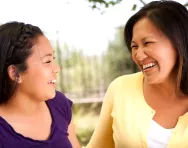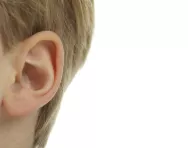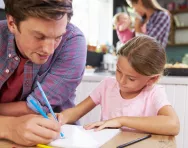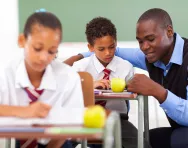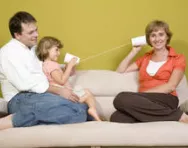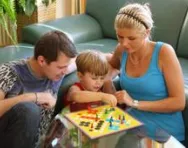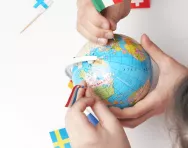Important update from TheSchoolRun
For the past 13 years, TheSchoolRun has been run by a small team of mums working from home, dedicated to providing quality educational resources to primary school parents. Unfortunately, rising supplier costs and falling revenue have made it impossible for us to continue operating, and we’ve had to make the difficult decision to close. The good news: We’ve arranged for another educational provider to take over many of our resources. These will be hosted on a new portal, where the content will be updated and expanded to support your child’s learning.
What this means for subscribers:
- Your subscription is still active, and for now, you can keep using the website as normal — just log in with your usual details to access all our articles and resources*.
- In a few months, all resources will move to the new portal. You’ll continue to have access there until your subscription ends. We’ll send you full details nearer the time.
- As a thank you for your support, we’ll also be sending you 16 primary school eBooks (worth £108.84) to download and keep.
A few changes to be aware of:
- The Learning Journey weekly email has ended, but your child’s plan will still be updated on your dashboard each Monday. Just log in to see the recommended worksheets.
- The 11+ weekly emails have now ended. We sent you all the remaining emails in the series at the end of March — please check your inbox (and spam folder) if you haven’t seen them. You can also follow the full programme here: 11+ Learning Journey.
If you have any questions, please contact us at [email protected]. Thank you for being part of our journey it’s been a privilege to support your family’s learning.
*If you need to reset your password, it will still work as usual. Please check your spam folder if the reset email doesn’t appear in your inbox.
Sign language and Makaton in primary schools
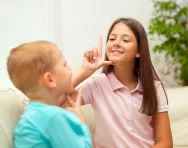
While some kids start school with an extensive vocabulary and have no difficulty expressing themselves, a growing number of children join Reception lacking the communication skills they need to get by.
According to the Early Intervention Foundation, a quarter of new starters are unable to communicate at the level expected for their age, and in areas of poverty, as many as 50 per cent start school with communication delays.
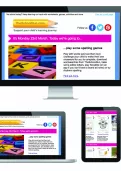
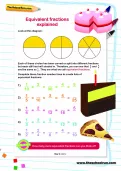
Start a unique learning programme!
- Weekly programme for each school year
- Worksheets sent direct to your inbox
- Keeps your child's learning on track
Signing can help these children access the curriculum and communicate with their teachers and peers, and it also has benefits for those who don’t have any additional needs.
The two main forms of signing used in primary schools are sign language and Makaton.
What is sign language?
Sign language is a means of communicating using gestures, facial expressions and body language.
The most common form of sign language is British Sign Language, or BSL. It’s the main language of around 145,000 people in the UK and has been recognised as an official language since 2003.
BSL has its own grammar and structure, and is only loosely connected to spoken English.
Another form of sign language is Sign Supported English (SSE). This is more closely linked to the English language, and is most commonly used in schools where children with hearing impairments mix with hearing people and are learning English grammar alongside signing.
Fingerspelling is an alphabet of hand signals used to spell out words that don’t have their own sign, such as the names of people and places.
What is Makaton?
Makaton is a language programme that uses signs and symbols to help people communicate. It’s used by people with a range of learning difficulties and communication problems, such as Down’s Syndrome and autistic spectrum disorders.
Makaton is designed to support spoken language. The signs are used alongside speech, in the same order as the spoken words.
Makaton can help people who have limited speech, or whose speech is unclear. Many children who learn Makaton drop the signs as their speech improves, but some continue to use it throughout their lives.
Why is signing being taught in mainstream primary schools?
There are many reasons why primary schools are choosing to teach sign language or Makaton. ‘Sign language promotes inclusivity with those within the school who rely on sign language, as well as with the wider community,’ says Simon Harvey of www.british-sign.co.uk. ‘It’s also a great way to learn about non-verbal communication methods in general.’
Mandy Grist, speech and language adviser at the children’s communication charity I CAN, says that learning Makaton helps all children communicate when they start school. ‘Using signs together with talking helps children to concentrate and listen to what is being said,’ she says. ‘It gives them something to look at as well as hear, and helps them make the connection between spoken words and their meaning.’
It also helps children with special needs feel more accepted: ‘It can help all children to feel included, as no one is singled out as requiring signing support,’ Mandy adds. ‘Some schools teach signing as part of their disability awareness work.’
How does signing benefit children with and without special educational needs?
Signing can help children of all abilities develop communication skills when they start school.
‘It can support young children coming into the new setting by slowing down teachers’ rate of speech and reducing the amount of language they use, as they’re signing at the same time,’ Mandy explains. ‘Young children benefit from this slow rate of speech, as they need lots of processing time: as much as seven to 10 seconds.’
The visual nature of signing means children tend to enjoy it, which can encourage reluctant communicators as well as those with special educational needs (SEN). This makes communication more inclusive.
‘Signs give children whose speech is difficult to understand a way of getting their message across,’ Mandy says. ‘It lets them make a contribution that others will understand, and so take part in class activities.’
Elizabeth Knight of The Makaton Charity adds that Makaton can help children understand more sophisticated concepts as they progress.
‘It can be used to help children develop literacy skills and grammatical understanding,’ she explains. ‘We even have a resource that is designed to help with understanding the language of maths, which has been shown to help children access the curriculum.’
Where signing is taught, it tends to be in the Foundation Stage (Nursery and Reception) and Year 1.
BSL is also becoming more popular as an extra-curricular option in secondary schools.
How do schools teach signing?
‘BSL can be taught either by teachers who are able to sign themselves, or by an external expert who comes in to provide sessions,’ says Simon.
‘Usually, schools begin with the fingerspelling alphabet; this can be picked up very quickly, and from there, there are lots of games that can be used to reinforce signs in a fun way.’
In the case of Makaton, schools usually bring in a tutor to teach staff how to sign; they then pass their skills on to pupils.
‘Children will typically start using one sign or symbol to represent a whole phrase, then put concepts together to make two- and three-word phrases, and so on,’ says Elizabeth.
Mandy adds that the emphasis is on making signing fun. ‘Teachers use a range of activities, including singing, relating signing to real life objects, and linking with parents so they can reinforce the skills at home,’ she explains.
Practising signing at home
If you fancy learning BSL alongside your child, there are many resources available online. ‘It’s a good idea to begin by learning the fingerspelling alphabet; there are lots of free resources at www.british-sign.co.uk, including fingerspelling games,’ says Simon.
You can also follow disability charity Sense's free BSL video lessons taught by Tyrese, a 15-year-old from Birmingham who is deaf and partially sighted. Each lesson covers a variety of Tyrese's favourite subjects, from family to holidays.
Download free BSL posters of useful signs from DeafBooks, where you can also purchase BSL dictionaries, flashcards and stickers.
Deaf Animation World create animations of nursery rhymes in BSL and teach BSL keywords and grammar on their YouTube channel.
Using Makaton at home
If you want to try Makaton, Mandy offers the following tips:
- Get down to your child’s level and gain their attention.
- Only use signs for the keywords in a sentence, e.g. ‘Do you want milk or juice?’
- Always use the same sign for the same action, object or idea.
- Always say the word at the same time.
- Leave lots of time for your child to look at the sign and respond.
‘Parents can access Makaton training through workshops, and there are resources available to purchase online,’ adds Mandy. ‘Mr Tumble on CBeebies is also very popular.’
